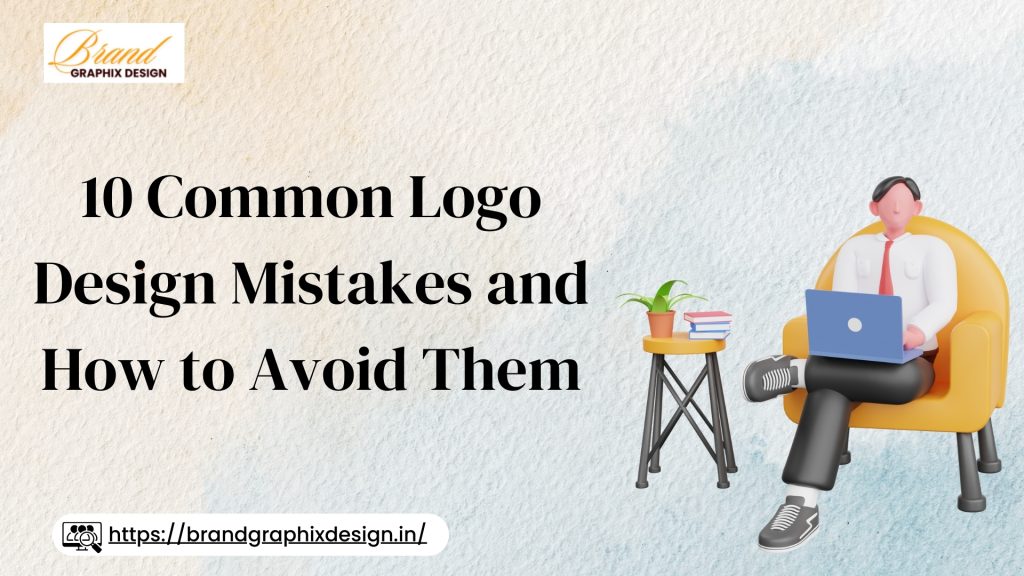Introduction
Creating a logo is a crucial part of building a brand’s identity. A well-designed logo can set the tone for your brand and make a lasting impression on your audience. However, many businesses make common mistakes in their logo design that can hinder their branding efforts. In this blog, we will discuss ten common logo design mistakes and how to avoid them. Understanding these mistakes will help you create a logo that effectively represents your brand and resonates with your audience.
1. Overcomplicating the Design
One of the most common mistakes in logo design is making the design too complex. Simplicity is key when it comes to creating a memorable and effective logo.
Keep It Simple
A simple logo is easier to recognize and remember. Avoid adding too many details or elements that can clutter the design. Focus on the core idea and keep the design clean and straightforward.
Ensure Clarity
Make sure your logo is clear and legible at different sizes. A complicated logo can lose its impact when scaled down. Test your logo in various sizes to ensure it maintains its clarity.
2. Ignoring the Brand Identity
Your logo should reflect your brand’s identity and values. Ignoring this aspect can lead to a logo that does not resonate with your target audience.
Understand Your Brand
Before designing your logo, take the time to understand your brand’s mission, values, and personality. Your logo should align with these elements and convey the right message to your audience.
Match the Style
Choose a design style that matches your brand. For example, a tech company might opt for a modern and sleek design, while a vintage store might choose a retro style. The design should feel authentic to your brand.
3. Using Too Many Colors
While colors are important in logo design, using too many can make your logo look chaotic and unprofessional.
Limit Your Color Palette
Stick to a limited color palette of two to three colors. This helps create a cohesive and balanced design. Use colors that complement each other and represent your brand effectively.
Consider Color Psychology
Colors evoke different emotions and associations. Choose colors that align with your brand’s values and the emotions you want to convey. For example, blue can represent trust and professionalism, while red can signify energy and passion.
4. Choosing the Wrong Fonts
The font you choose for your logo is crucial. The wrong font can make your logo look unprofessional or out of sync with your brand.
Select Readable Fonts
Choose fonts that are easy to read. Avoid overly decorative or complex fonts that can be hard to decipher. Stick to clean and simple fonts that enhance the overall design.
Reflect Your Brand’s Personality
The font should match your brand’s personality. For example, a playful and fun brand might use a whimsical font, while a serious and professional brand might choose a classic serif font.
5. Copying Other Logos
Imitating other logos can harm your brand’s credibility and lead to legal issues. Your logo should be unique and original.
Create an Original Design
Ensure your logo is distinct and does not resemble other logos, especially those of competitors. Use your creativity to develop a design that stands out and represents your brand uniquely.
Avoid Stock Images
Using stock images or clip art can make your logo look generic and unoriginal. Invest in a custom design that is tailored specifically to your brand.
6. Overlooking Versatility
Your logo should be versatile and work well across different mediums and formats. Overlooking versatility can limit the effectiveness of your logo.
Test Across Mediums
Ensure your logo looks good in various formats, including print, digital, and merchandise. Test it in different sizes and backgrounds to ensure it maintains its integrity and impact.
Create Versions
Create different versions of your logo, such as a full-color version, a black-and-white version, and a simplified version. This ensures your logo remains effective in different contexts.
7. Failing to Consider Scalability
A good logo should look great at any size, whether it’s on a business card or a billboard. Failing to consider scalability can lead to a logo that loses its effectiveness when resized.
Design with Scalability in Mind
Design your logo to be scalable. Avoid intricate details that can get lost when the logo is scaled down. Ensure all elements are clear and legible at different sizes.
Use Vector Graphics
Create your logo using vector graphics. Vector graphics are resolution-independent, meaning they can be scaled to any size without losing quality. This ensures your logo remains sharp and clear in all applications.
8. Ignoring Feedback
Feedback is crucial in the design process. Ignoring feedback can result in a logo that does not resonate with your audience or meet their expectations.
Gather Diverse Feedback
Seek feedback from various sources, including colleagues, clients, and target audience members. Different perspectives can provide valuable insights and help you refine your design.
Be Open to Criticism
Be open to constructive criticism and use it to improve your design. Don’t take feedback personally; instead, view it as an opportunity to enhance your logo and ensure it effectively represents your brand.
9. Neglecting Trends
While it’s important to create a timeless logo, completely ignoring design trends can make your logo look outdated.
Stay Updated with Trends
Stay updated with current design trends to ensure your logo remains relevant. However, use trends sparingly and ensure your logo retains a timeless quality that won’t look outdated quickly.
Balance Timelessness and Modernity
Find a balance between timeless design principles and modern trends. This ensures your logo stays fresh and relevant while maintaining its longevity.
10. Lack of a Clear Concept
A logo without a clear concept can confuse your audience and fail to convey your brand’s message. It’s important to have a well-defined concept before starting the design process.
Develop a Strong Concept
Take the time to develop a strong concept that reflects your brand’s values and mission. A clear concept provides direction and coherence to your design.
Tell a Story
Your logo should tell a story about your brand. Use symbols, colors, and fonts that convey the essence of your brand and create a connection with your audience.
Avoiding these common logo design mistakes can help you create a logo that effectively represents your brand and resonates with your audience. A well-designed logo can set the tone for your brand and make a lasting impression. If you need assistance with designing your logo, feel free to contact us at +91 91189 11171 or send us a WhatsApp message for expert advice and support.



